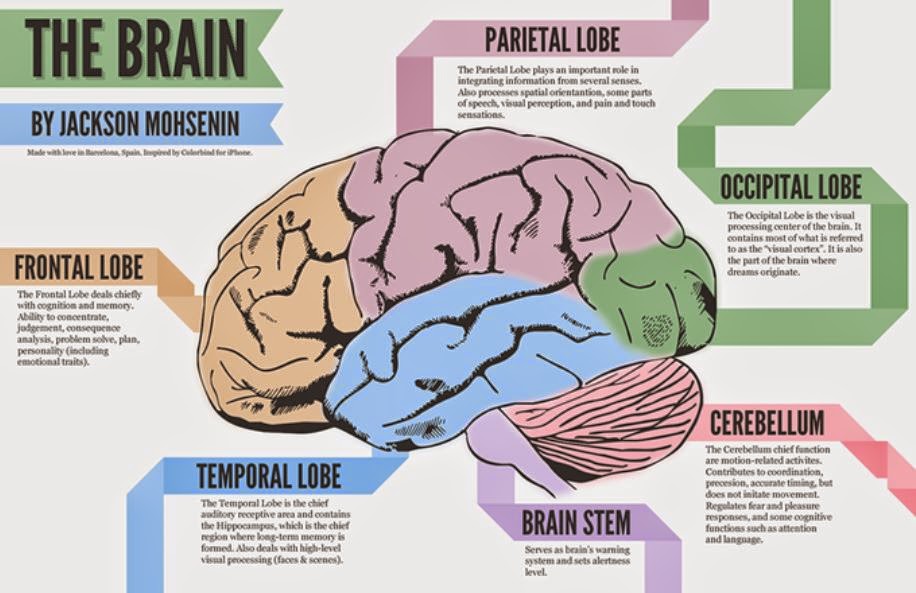Why is the human brain wrinkled?
Researchers found that the particular pattern of
the ridges and crevices of the brain's convoluted
surface (gyri and sulci) depends on two simple geometric parameters: the gray
matter's growth rate and its thickness. Along
with these physical constraints, genes also have a role in determining the
brain's shape. Genes regulate how neurons increase rapidly and migrate to their
destinations. All mammal species have similar layering in the cortex (brain’s
outer layer,) but only large mammals have one that is folded. A folded brain
surface has a greater surface area than a smooth one, which means a greater power for processing information. The white matter of the brain is made up primarily of
axon tracts, the long, spindly appendages of some brain cells, whereas the gray
matter is mostly neuron cell bodies and non-neuron brain cells called glial
cells.
Did you know that?
·
Lack of oxygen in the brain for 5-10 minutes leads to permanent brain
damage
·
Your brain keeps developing until your late 40s
·
Your brain uses 20% of the total oxygen and blood in your body
·
When awake the human brain produces enough electricity to power a small
light bulb
·
60% of your brain is fat
·
The smell of
chocolate increases theta brain waves which triggers relaxation
·
When you learn something new the structure of your brain changes
This is a comparison with a typical
brain and Einstein’s brain. The absence of the parietal operculum from Einstein’s
brain may have allowed a part of his brain to grow wider than normal. Also, his
lower parietal lobe (which is responsible for mathematical thought,
visuospatial cognition, and imagery of movement) was 15% larger than average.
Then, what is the parietal oerculum? The parietal operculum processes
information from many of the senses like touch.
 |
Sujin and Aoife's Joint Project #2


No comments:
Post a Comment